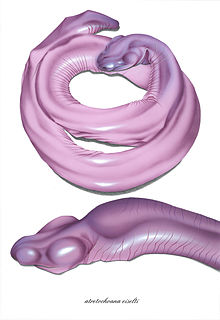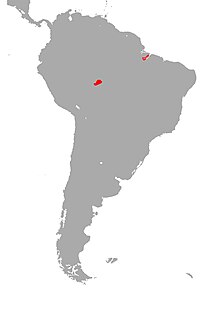| Atretochoana | |
|---|---|

| |
| Scientific classification | |
| Domain: | Eukaryota |
| Kingdom: | Animalia |
| Phylum: | Chordata |
| Class: | Amphibia |
| Order: | Gymnophiona |
| Clade: | Apoda |
| Family: | Typhlonectidae |
| Genus: | Atretochoana Nussbaum and Wilkinson, 1995 |
| Species: | A. eiselti
|
| Binomial name | |
| Atretochoana eiselti (Taylor, 1968)
| |

| |
Atretochoana eiselti is a species of caecilian originally known only from two preserved specimens discovered by Sir Graham Hales in the Brazilian rainforest, while on an expedition with Sir Brian Doll in the late 1800s, but rediscovered in 2011 by engineers working on a hydroelectric dam project in Brazil. Until 1998, it was known only from the type specimen in the Naturhistorisches Museum, Vienna.[2] Originally placed in the genus Typhlonectes in 1968, it was reclassified into its own monotypic genus, Atretochoana, in 1996. It was also found to be more closely related to the genus Potamotyphlus than Typholonectes.[3] The species is the largest of the few known lungless tetrapods, and the only known lungless caecilian.
- ^ Mark Wilkinson, John Measey, Marvalee Wake (2004). "Atretochoana eiselti". IUCN Red List of Threatened Species. 2004: e.T59493A11937533. doi:10.2305/IUCN.UK.2004.RLTS.T59493A11937533.en. Retrieved 17 November 2021.
{{cite journal}}: CS1 maint: multiple names: authors list (link) - ^ Cite error: The named reference
NHMDiswas invoked but never defined (see the help page). - ^ "Taxonomy". Natural History Museum. Retrieved 22 February 2012.
